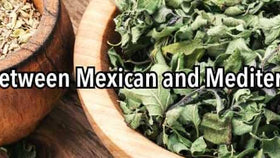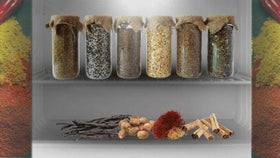What Are The Different Kinds Of Vanilla Beans
Can you imagine a world without vanilla? You’d be hard-pressed to find a cake, cookie, coffee, or fragrance that doesn’t feature at least a small amount of the world’s most popular aroma and second most expensive spice. Not all vanilla is created equally, though. Just as wines have their own distinct flavor profile based on the grape type, region, terroir, degree of ripeness at which it was harvested, and production methods, vanilla beans can differ greatly due to their own unique set of factors.
What Sets Vanilla Beans Apart From Each Other
Knowing that there are different types of vanilla beans is just half the battle. Having a thorough understanding of the most common commercial species of vanilla beans and their basic flavor and aromatic profiles will enable you to choose a bean that will satisfy the requirements of your intended use, but it won’t ensure you have the best possible bean for it because there is so much more to consider when it comes to flavor and aromatic components.
Going back to the wine example: a recipe might suggest you pair the roasted duck and wild mushrooms with a Pinot Noir, but the recipe developer would probably slap your hand if you chose a boxed version that was mass-produced from a combination of grapes grown in the Midwest and those from Northern California over a bottle of single origin Oregon Pinot Noir from selectively-harvested, cool-climate grapes grown in perfect soil conditions and then carefully pressed and perfectly aged.
Choosing a vanilla bean is no different.
In this blog post, we’ll go beyond the species of vanilla beans and look at the different growing regions because their harvesting practices, curing methods, and other bean specifics are incredibly different. Our goal is to ensure you are choosing the best possible vanilla bean for your intended application.
Different Species of Commercially Available Vanilla Beans
Though there are hundreds of species that belong to the vanilla orchid family, only three are made commercially available on a global scale. These three are V. Planifolia, V. Tahitensis, and V. Pompona, listed in order of popularity and distribution levels.
Take a look at this post for a deeper dive into what sets the three main species of vanilla beans apart.
Vanilla Planifolia
Vanilla planifolia is primarily grown in East Africa and Indonesia, though it is produced in many other areas around the world with similar climates. It boasts that classic creamy vanilla flavor that most fake vanilla flavoring agents attempt to imitate.
Vanilla Tahitensis
Vanilla Tahitensis is primarily known for its unexpected sweetness and floral notes, in both flavor and aroma. It is commonly used in the production of fragrances.
Vanilla Pompona
Vanilla Pompona is one of the oldest vanilla varieties but is far less recognized than V. Tahitensis and V. Planifolia. It is typically noted as being pungent and fruity.
How Vanilla Bean Species Differ Based On Where They Are Grown
The species alone doesn’t determine their flavor and aroma notes, however. Vanilla Planifolia produced in Madagascar, for example, can be extremely different from that grown in Indonesia. Furthermore, even vanilla beans sourced from the same exact plant and grown in the same soil type could be extremely different from one year to the next, due to fluctuating weather conditions.
The other factors that play a role in securing the final product characteristics are the time of day in which the beans were harvested, the degree of ripeness, the way in which they were cured, moisture content, and how they are packaged and stored. Not only do the varying growing regions have distinct weather and soil conditions, but they also typically have their own unique harvesting and curing practices.
Some of the most common vanilla beans are Madagascar, or Bourbon (primarily Planifolia but also Pompona), French Polynesian (primarily Tahitensis), Papua New Guinea (both Planifolia and Tahitensis), Ugandan (both Planifolia and Tahitensis), Mexican (primarily Planifolia but also Pompona), and Indonesian (Primarily Planifolia but also Tahitensis).
Let’s look at the primary beans grown in each of these regions.
Madagascar Vanilla Beans
Madagascar is renowned for its Planifolia vanilla bean production. Vanilla beans from this region are also known as Bourbon vanilla beans—not because they have anything to do with the liquor by the same name, but because of the name of the chain of islands upon which they were grown. These beans are the standard by which most other vanilla beans are compared. They are creamy and smooth, with notes of milk chocolate. They are perfect for use in a variety of baking projects, baked custard-based dishes, simple syrup for coffee and cocktails, and of course, ice cream.
More recently, Madagascar has expanded their vanilla bean cultivation to include Pompona vanilla beans. These beans are also known as Mexican-cured Madagascar Vanilla. They are leathery, with high levels of vanillin and vanilla seeds. They naturally have a higher water content and are not blanched in water like many other beans. Instead, they are sun-cured, which intensifies their aroma. They are ideal for adding an intense flavor to homemade liquors and exotic aromatics to perfumes.
Find Gourmet Madagascar Planifolia Vanilla Beans harvested and cured at optimum ripeness right here and Madagascar Pompona Beans here.
Tahitian Vanilla Beans
These beans grown in French Polynesia are revered for their aromatic perfection and a flavor that is both sweet and incredibly floral. The vanillin content is much lower than that found in Madagascar beans, but what they lack in that classic, creamy vanilla flavor, they make up with notes of jasmine or honeysuckle and a subtle fruitiness that makes them a perfect choice for fruity desserts and pastries.
Papua New Guinea Vanilla Beans
PNG produces some of the world’s highest quality Planifolia and Tahitensis beans. Like most V. Tahitensis, theirs are floral and sweet, but they are also exceptionally oily with notes of dark cherries and oak. These beans are perfect for any perfumery project, but we also love to use them in extracts and cocktails.
Their Planifolia beans are just as impressive. Adored for their well-balanced nature, with caramel undertones and subtle floral notes, these beans make a fantastic addition to cream sauces and gelatos.
Get your hands on some PNG Tahitensis and PNG Planifolia Vanilla Beans.
Ugandan Vanilla Beans
These versatile beans are truly spectacular. Unlike most other growing regions, Ugandan vanilla can be harvested twice a year. They also tend to be bigger and more impressive in appearance than other vanilla beans, which makes them a popular choice among chefs. These vanilla beans are incredibly bold, yet surprisingly buttery. They are an excellent choice for high-end desserts, such as elegant cakes and pastries.
Find high-quality Ugandan vanilla beans here.
Mexican Vanilla Beans
When looking for vanilla, you may be tempted to purchase a less expensive Mexican Vanilla, but be wary when you do. Much of the Mexican Vanilla on the market is actually sourced from the Tonka Tree rather than a Vanilla Bean Orchid. The Tonka Tree produces a “bean” that is actually a member of the pea family. Should you come across true vanilla beans grown in Mexico, you’ll be pleasantly surprised. Most of their production is of the Planifolia variety, but they tend to be more mellow than their Madagascan counterpart and boast a slightly smoky flavor. Choose Mexican vanilla beans for chocolatey beverages and desserts and slow-cooked dishes with high spice levels.
These are some of the best quality Mexican Vanilla Beans we’ve ever came across.
Indonesian Vanilla Beans
Rich and earthy, these beans are perfect for enhancing anything with chocolate or nuts. They have a subtle spiciness and high levels of vanilin content, which makes them a great choice for pairing with citrus fruits or including in a Mexican mole or even a barbecue sauce. Indonesia is the second largest producer of vanilla beans and their unique curing process aids in producing a more exotic flavor and leads to a bean that is less pliable than other varieties, which makes it a wonderful choice for high-heat applications and longer infusions.
Experience Indonesian vanilla beans for yourself!










Slofoodgroup
Author